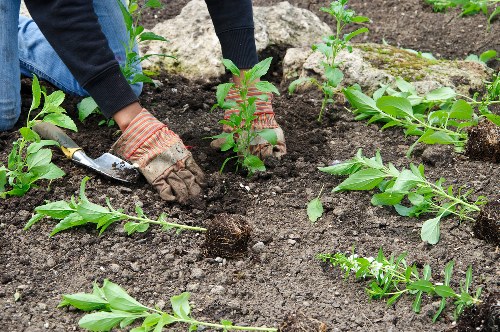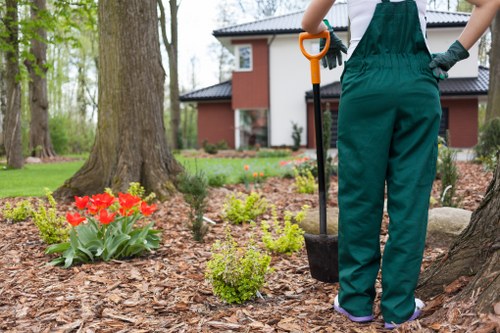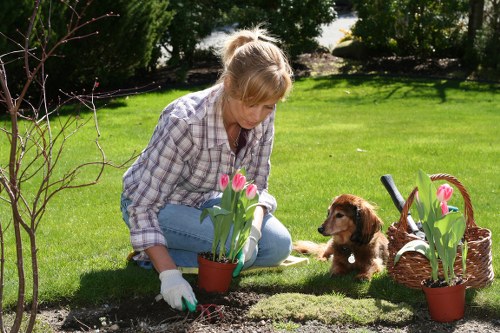Lawn Turf Installation: Transform Your Outdoor Space
Introduction to Lawn Turf Installation

Lawn turf installation is a popular choice for homeowners looking to enhance the beauty and functionality of their outdoor spaces. Whether you're starting from scratch or renovating an existing lawn, professional turf installation can provide a lush, green yard that is both aesthetically pleasing and easy to maintain.
Choosing the right type of turf is essential for ensuring long-lasting results. Factors such as climate, soil type, and intended use of the lawn play a significant role in selecting the perfect turf variety.
In this comprehensive guide, we will explore the essential steps involved in lawn turf installation, the benefits of a professionally installed lawn, and tips for maintaining your new turf to ensure it remains vibrant and healthy for years to come.
Benefits of Professional Turf Installation

Opting for professional lawn turf installation offers numerous advantages over DIY methods. Professionals bring expertise, quality materials, and specialized equipment to ensure your lawn is installed correctly and efficiently.
- Expert Assessment: Professionals can assess your soil quality, drainage, and sunlight exposure to recommend the best turf type for your specific conditions.
- Time Efficiency: Hiring experts saves you time and effort, allowing you to enjoy your new lawn sooner.
- Quality Assurance: Professional installers use high-quality turf and follow industry best practices, ensuring a durable and attractive lawn.
Investing in professional turf installation not only enhances the immediate appearance of your yard but also contributes to the long-term health and resilience of your lawn.
Steps Involved in Lawn Turf Installation

Proper lawn turf installation involves several critical steps that must be followed meticulously to achieve the best results. Here is a detailed overview of the process:
- Site Preparation: Clear the area of weeds, rocks, and debris. Remove any existing grass or old turf to create a clean slate for the new installation.
- Soil Conditioning: Test the soil pH and nutrient levels. Amend the soil as necessary with fertilizers, compost, or lime to create optimal growing conditions.
- Grading and Leveling: Ensure the ground is level and properly graded to facilitate drainage and prevent water pooling, which can damage the turf.
- Laying the Turf: Roll out the turf in a staggered pattern to avoid seams and ensure a seamless appearance. Press the turf firmly into the soil to eliminate air pockets and promote root contact.
- Watering: Water the newly installed turf thoroughly to help the roots establish and anchor into the soil.
Choosing the Right Turf Variety

Selecting the appropriate turf variety is crucial for the success of your lawn. Different types of turf offer varying levels of durability, shade tolerance, and maintenance requirements.
Popular Turf Types:
- Bermuda Grass: Ideal for warm climates, known for its durability and ability to withstand heavy foot traffic.
- Fescue: Perfect for cooler climates, offers excellent shade tolerance and a soft texture.
- Kentucky Bluegrass: Popular in temperate regions, valued for its lush appearance and resilience.
Consulting with a turf installation professional can help you determine the best variety for your specific environmental conditions and usage needs.
Maintaining Your Newly Installed Lawn

Proper maintenance is essential to keep your lawn healthy and vibrant. Here are some key maintenance tips:
- Regular Watering: Water your turf deeply but infrequently to encourage deep root growth.
- Mowing: Keep your grass at the recommended height for its variety to promote healthy growth and prevent weed invasion.
- Fertilization: Apply fertilizers as needed based on soil test results to replenish nutrients.
- Pest Control: Monitor for pests and diseases, and take appropriate measures to address any issues promptly.
By adhering to a consistent maintenance schedule, you can ensure that your lawn remains a beautiful and inviting feature of your home.
Common Challenges in Turf Installation
While lawn turf installation can transform your outdoor space, it’s important to be aware of potential challenges that may arise during the process.
Soil Compaction
Compacted soil can hinder root growth and water penetration, leading to poor turf health. To prevent this, ensure thorough soil preparation and aeration before laying the turf.
Improper Drainage
Inadequate drainage can cause water to pool on the surface, increasing the risk of turf disease and root rot. Proper grading and the use of drainage solutions are essential to address this issue.
Weed Invasion
Weeds can compete with turf for nutrients and sunlight, detracting from the lawn’s appearance and health. Using a pre-emergent herbicide and maintaining proper mowing heights can help control weed growth.
Innovative Turf Installation Techniques
Advancements in turf installation techniques have made the process more efficient and effective. Here are some modern methods being used by professionals:
Hydroseeding
Hydroseeding involves spraying a mixture of seeds, fertilizers, and mulch onto the prepared soil. This method is cost-effective and suitable for large areas, promoting even seed distribution and faster germination.
Roll-Out Turf
Roll-out turf remains a popular choice for instant lawn transformation. High-quality rolls ensure a uniform appearance and quick establishment when properly installed.
Soil Aeration Systems
Using advanced soil aeration systems can improve soil structure, enhance nutrient absorption, and promote deeper root growth, resulting in a healthier lawn.
Cost Considerations for Turf Installation
The cost of lawn turf installation can vary based on several factors, including the size of the area, type of turf chosen, and any additional landscaping features.
- Material Costs: Premium turf varieties typically cost more but offer better durability and appearance.
- Labor Expenses: Professional installation fees depend on the complexity of the project and the expertise of the installers.
- Preparation Work: Extensive soil preparation, grading, or drainage solutions can add to the overall cost.
Obtaining multiple quotes and discussing your specific needs with installation professionals can help you budget effectively and achieve the best value for your investment.
Environmental Benefits of a Healthy Lawn
A well-maintained lawn offers several environmental benefits, contributing to a greener and more sustainable landscape.
Air Quality Improvement
Grass acts as a natural air filter, absorbing carbon dioxide and releasing oxygen, thereby enhancing the overall air quality in your surroundings.
Water Conservation
Properly installed and maintained turf can improve water absorption, reducing runoff and promoting groundwater recharge. Selecting drought-resistant turf varieties further enhances water conservation efforts.
Temperature Regulation
Lush lawns provide natural cooling, helping to mitigate the urban heat island effect by lowering ambient temperatures through shade and evapotranspiration.
Choosing a Reliable Turf Installation Service
Selecting the right service provider is critical to the success of your turf installation project. Here are some tips to help you make an informed decision:
Experience and Expertise
Look for companies with a proven track record and extensive experience in turf installation. Experienced professionals are more likely to deliver high-quality results.
Customer Reviews and References
Check online reviews and request references to gauge customer satisfaction and the quality of the company’s work.
Comprehensive Services
Choose a provider that offers a full range of services, including site assessment, soil preparation, installation, and maintenance support.
Transparent Pricing
Ensure the company provides clear and detailed pricing information, with no hidden fees, to facilitate budgeting and avoid unexpected costs.
Frequently Asked Questions About Turf Installation
Here are some common questions homeowners have about lawn turf installation:
How long does turf installation take?
The installation process typically takes a day or two, depending on the size of the area and the complexity of the project. Allow a few weeks for the turf to fully establish.
Can I install turf myself?
While DIY turf installation is possible, it requires careful planning, proper soil preparation, and the right tools. Hiring professionals ensures optimal results and saves time.
How do I care for my new turf?
Follow a regular maintenance routine that includes watering, mowing, fertilizing, and pest control to keep your lawn healthy and vibrant.
What types of turf are best for high-traffic areas?
Bermuda grass and certain synthetic turfs are well-suited for high-traffic areas due to their durability and resilience.
Conclusion
Lawn turf installation is a worthwhile investment that can significantly enhance the beauty and functionality of your outdoor space. By understanding the installation process, selecting the right turf variety, and maintaining your lawn properly, you can enjoy a lush, green yard that adds value and appeal to your home.
Ready to transform your lawn? Contact us today to schedule a consultation and take the first step toward your dream outdoor space.